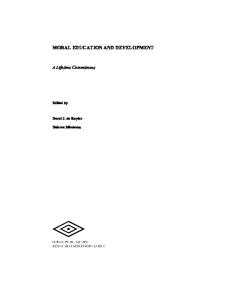Measuring commitment to self-tracking: development of the C2ST scale
- PDF / 389,963 Bytes
- 12 Pages / 595.276 x 790.866 pts Page_size
- 72 Downloads / 333 Views
ORIGINAL ARTICLE
Measuring commitment to self-tracking: development of the C2ST scale Elçin Hancı 1
&
Joyca Lacroix 2 & Peter A. M. Ruijten 1 & Antal Haans 1 & Wijnand IJsselsteijn 1
Received: 29 November 2019 / Accepted: 3 September 2020 # The Author(s) 2020
Abstract Self-tracking technologies bring a new set of experiences into our lives. Through sensors and ubiquitous measurements of bodily performance, a new form of automation experience shapes our understanding of our body and our behavior. While for many individuals self-tracking has an important role in their daily lives, a theoretical understanding of the level and behavioral manifestations of commitment to self-tracking is still missing. This paper introduces the concept of commitment to self-tracking and presents the development and first validation of a new 12-item behavior-based scale for its measurement, the Commitment to Self-Tracking (C2ST) scale. Using online survey data from individuals wearing self-tracking technology (N = 300), we explore the underlying factor structure of the scale and determine its reliability and validity. An analysis of the survey data indicates that commitment to self-tracking positively correlates with autonomous motivation for tracking and negatively correlates with controlled motivation. The C2ST scale brings insights on how self-tracking technology, as a novel automation experience, is affecting users’ everyday behaviors. Overall, by emphasizing the feasibility of defining commitment behaviorally, the paper concludes with implications for theory and practice and suggests directions for future research. Keywords Self-tracking . Commitment . Quantified self . Measurement . Scale development
1 Introduction For many individuals, self-tracking technologies have become an integral part of everyday automation experiences. Similar to other smart technologies, from voice-activated speakers to smart light bulbs, it is a form of automation that * Elçin Hancı [email protected] Joyca Lacroix [email protected] Peter A. M. Ruijten [email protected] Antal Haans [email protected] Wijnand IJsselsteijn [email protected] 1
Eindhoven University of Technology, PO Box 513, 5600 MB Eindhoven, The Netherlands
2
Philips Research, High Tech Campus 34, 5656 AE Eindhoven, The Netherlands
affects our everyday life and enhances our capabilities. Uniquely, self-tracking technologies claim to facilitate a digital connection with our own bodies. The use of sensors and computing devices encompass a transformative capacity, converting one form of information (e.g., physical and physiological states) into forms of information that are subject to diagnosis and evaluation. Ultimately, the use of selftracking, by virtue of the automation experience it offers, transforms how we make sense of ourselves. It also tends to redefine the purpose of an activity—once we start measuring an activity, in a sense, it becomes a different activity altogether. The slogan of the Quantified Self (QS) movement, “Self-knowledge through numbers,” highlights th
Data Loading...











